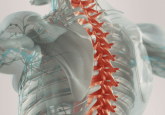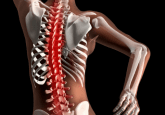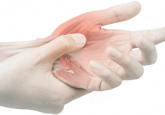AI-powered neural bypass restores movement and sensation in man with paralysis

For the first time, researchers have successfully implanted an AI-powered double neural bypass to restore feeling and movement in an individual with quadriplegia.
In a medical milestone that could revolutionize the treatment of paralysis, researchers, engineers and surgeons at the Feinstein Institutes for Medical Research (NY, USA) have successfully implanted microchips into the brain of a man living with quadriplegia, enabling him to regain movement and sensations through a double neural bypass. This achievement offers new hope to the millions of people worldwide who suffer from movement impairment or paralysis.
The individual had previously suffered a spinal cord injury at the C4 and C5 level of his vertebrae, leaving them paralyzed from the chest down. A team of surgeons conducted a 15-hour open brain surgery, during which the patient was awake and providing real-time feedback. This unique approach allowed the surgeons to precisely place brain implants – two chips responsible for movement and three for touch – in the appropriate regions of the brain.
Ashesh Mehta, professor at the Feinstein Institutes’ Institute of Bioelectronic Medicine and the surgeon who performed the brain implant surgery explained, “because the patient was talking to us during parts of their surgery, we knew exactly where to place the brain implants.”
The brain implants were then connected to a computer that employs AI algorithms to read, interpret and translate the individual’s thoughts into actions, forming the basis of the thought-driven therapy. This innovative approach creates a connection between the patient’s intentions and their body’s responses, initiating movement and sensations.
For instance, when the individual thinks about squeezing their hand, electrical signals are sent from the brain implant to the computer, which sends a signal to electrode patches on the spine and the forearm. This signal stimulates muscles in the hand, promoting function. Tiny sensors at the fingertips and palm send touch and pressure information back to the sensory area of the brain to restore sensation. This two-arm electronic bridge forms the novel double neural bypass aimed at restoring both movement and sense of touch, something previously considered unachievable.
Chad Bouton, a professor in the Institute of Bioelectronic Medicine at the Feinstein Institutes and the developer of this technology, expressed the significance of this achievement, stating, “this is the first time the brain, body, and spinal cord have been linked together electronically in a paralyzed human to restore lasting movement and sensation.”
Remarkably, researchers claim that this neural bypass has sparked signs of natural recovery, with the participant’s arm strength more than doubling since enrolling in the study. The individual is also beginning to experience new sensations in his forearm and wrist, even when the system is off.
Over 100 million people live with some form of movement impairment or paralysis globally. This groundbreaking clinical trial brings new possibilities for these people, aiming to restore lasting physical movement and sense of touch outside of the research lab. The successful implementation of the double neural bypass technique opens unprecedented avenues for paralysis treatment beyond this one success story. As the technology continues to advance, more lives could be transformed, offering a new hope and increased independence to those who are affected by paralysis.
You might also like:



